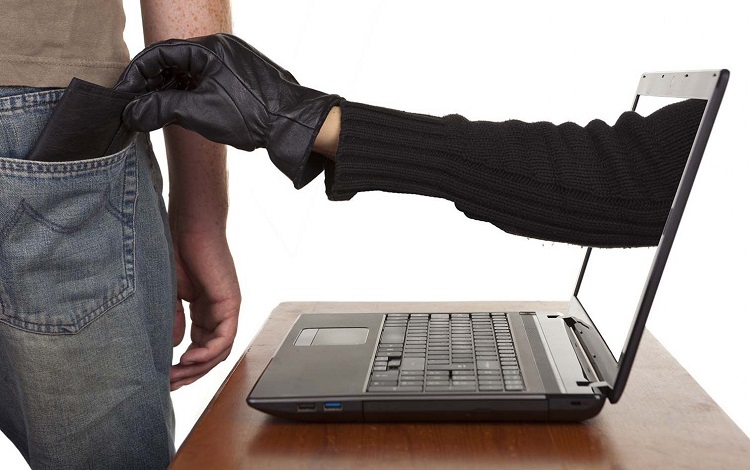What Is Dropshipping? – A Quick Guide

The internet has undoubtedly changed the way we do business for good, and one sector that’s benefited the most from this online transition is commerce.
E-commerce stores can now be started by just about anyone with the entrepreneurial spirit and made easier with a wealth of tools at your fingertips.
Online businesses that sell physical goods no longer even have to ship the product themselves, nor do they need a huge warehouse of complicated stock management systems in place. This is all thanks to dropshipping and it takes a huge weight off the shoulders of businesses who decide to use it.
So, what is dropshipping all about?
Dropshipping is a process that allows e-commerce stores to sell products online without having to stock, store, or ship the items themselves. This part is all handled by a third party (dropshirt) who sends the packaged order to the (your) customer, making for a much easier procedure.
If you’ve been thinking about starting a business online but aren’t sure about handling shipping and storage or you just want to make life easier for yourself, dropshipping is a great option.
We’re here to dive into what this process is all about, the best types of businesses to benefit from it, and any potential downsides you should be aware of before signing up.
The History of Dropshipping
Dropshipping is one of the latest buzzwords hanging around e-commerce, but not many people realise that the business model was invented long before the internet even existed.
Companies have long relied on storing bulk stock off-site and having someone else handle the shipping and inventory management for them, so it’s nothing new.
The first instance of dropshipping was seen in the 1960s with mail-order catalogues are large stores had access to fulfilment warehouses that took control of their inventory and shipped customer orders directly from there.
These warehouses were similar to how Fulfilment By Amazon warehouses operate today, and made it easier to take care of inventory and shipping externally.
Today, dropshipping is used still by these stores in Australia and beyond, but most predominantly by online businesses that have a product to sell but don’t want to do every step by themselves.
There are varying levels of dropshipping you can use, including a full service that tracks inventory, stores stock, and ships the goods for you, or one that allows you to take care of inventory while they store it in a warehouse and send it for you.
EDITORS NOTES
The fulfilment model we employ here at dropshirt is a hybrid model, born from the traditional drop shipping method we have just explained. However, we added a ‘print on demand‘ element to the drop shipping equation. Guaranteeing you have a truly unique product that only you can sell. One at a time – on demand.
The business that uses this type of dropshipping has a clear advantage. The product is unique to you, and only you are able to sell that unique design.
Dropshirt solves the only downside to traditional dropshipping. The fact that you can get undercut (a competitor sells the same item for a lower price than you) on price by another re-seller who is selling the exact same drop shipped product from the platforms we are going to list later in this article.
How Does the Process Work?
Dropshipping is a process that takes care of the shipping and fulfilment of goods so that the business relies on a third-party vendor or supplier to do this step for them.
The easiest way to understand how dropshipping works, though, is to compare a business that uses it with one that doesn’t. See how the process differs depending on the business model and whether or not they take care of their shipping.
A Business Without Dropshipping
- Your business is in control of the inventory that you hold, including purchasing new inventory, keeping a track of what’s in stock, and re-ordering whatever is running low. This is generally done in bulk or with minimum order quantities so you can source the lowest wholesale price.
- The stock is stored by your business in a warehouse or storefront somewhere. They stay here until they’re purchased and need to be shipped.
- A customer visits your website and buys something from you. The entire process is completed on your website including entering shipping information and payment for the goods.
- You process their order by finding the stock in your warehouse or store, packaging it, and shipping it to the customer.
- If the customer has issues with the shipping process, incorrect or damaged stock, you will be responsible for rectifying this.
A Business With Dropshipping
- A customer visits your online store and purchases an item or items. They complete the entire checkout process on your website, pay you for their purchase and receive a confirmation of their order from you.
- The order is then passed, behind the scenes, to your dropshipper with all of the relevant details included.
- The dropshipper receives the order from you, packages up the goods that the customer ordered, and ships them to the customer for you. They may also send a shipping confirmation to the customer that appears as if it’s from your business.
- You pay a fee to the dropshipper that includes the wholesale price of the item and the fee for their dropshipping service, usually before it is sent.
- If there are any issues with shipping or stock, the dropshipper will handle this.
The Benefits of Using Dropshipping
Dropshipping has come alive with the emergence of e-commerce stores thanks to all of the benefits it offers. If you’ve been thinking about engaging the dropshipper business model but want to know what makes it so great, check out the biggest advantages it brings to the table.
- Lower risk
Unlike a traditional business model where a store owner must purchase the inventory before selling it, dropshipping means you don’t have to pay upfront for products that you might not sell. There’s a lower risk involved because you’re only paying the dropshipper to sell things that have been bought, so it’s only ever on demand.
- Minimal start-up costs
Starting any new business is tough but especially when you need to buy all of the inventory and stock first. This puts many potential entrepreneurs out of the race, but dropshipping lets you get started without laying down serious cash first.
- Frees up your time
Having someone take control of this entire aspect of your business can leave you with a lot more free time. You can improve your business, invest energy into marketing and promotions, and come up with ideas that will earn you more money in the future while all of this is taken care of.
- Low business costs
Owning an online store that uses dropshipping means your overheads are kept low. You can effectively run the whole business from a laptop and with a phone, while the dropshipper takes care of the rest of it. There’s no need to lease a shopfront or pay rent in a warehouse so you can keep all of these usual costs to yourself.
Potential Pitfalls
As with anything in the world of business, you need to be aware of both sides of the coin before making a decision. Although it sounds like dropshipping is all roses and rainbows, there are still some potential downsides that you should consider.
- Can get extremely competitive
If two or more resellers get into a price war with each other, and each is constantly lowering the price on particular goods. It can quickly end up being a race to the bottom. A place where you don’t make any money at all.
- Doesn’t suit all products
Not all products work with the dropshipping model. Larger and bulky items, those that can’t be advertised online through channels like Facebook, and potentially dangerous products won’t be suited to drop shipping.
- Can be risky
There are risks involved when a business isn’t able to physically see the goods they are selling online. Without being able to inspect the products you’re selling and see if they’re at the standard you hope for, it’s hard to know for sure.
- Potentially high costs
Some dropshipping platforms charge huge amounts for their service and if you’re not selling enough volume (or anything), you could end up doing worse off than you hoped for. Just because you’re using the dropshipping model, it doesn’t mean you will always be turning a profit, so it’s something to keep in mind.
The Best Sites That Offer Dropshipping
There are loads of dropshipping platforms out there to explore, but the best one for you will depend on your business.
Some are more specific, like for designing and delivering t-shirts for example, and others deal with all types of products, sizes, and shipping destinations. These are a few of the bigger names and what they offer businesses looking to outsource their shipping.
- Dropified: A popular choice for people who get their products from AliExpress. This platform offers automated orders but they don’t have a marketplace made specifically for them.
- AliExpress: One of the biggest dropshippers and with access to a huge range of inventory. Although not always considered to be the best quality, they’re still a reliable provider.
- DHGate: This predominantly Chinese supplier has had issues in the past with bad reviews on some products, but they remain one of the most affordable ways to dropship your goods to customers.
- Modalyst: Modalyst aims to automate everything for your business and they can even put you in contact with the best dropshippers that suit your product range, provided you’re willing to pay the premium.
- Oberlo: Oberlo is one of the widest used dropshippers among the Shopify community and they have good reviews for service, but they have had some issues with lead times for deliveries in the past.
Is It Really Worth It?
The pros of dropshipping certainly outweigh the cons but it should still be looked at with scrutiny before deciding if it’s right for you. You’ll benefit from lower overheads and less risk, which is always a bonus in business and having all of the free time that comes with outsourcing shipping and inventory management.
However, dropshipping isn’t going to be right for every company and is certainly not a one size fits all approach. It should be looked at as a possibility while doing in the early stages of planning your business model and you’ll need to take into account the risks and rewards that it would offer your company specifically.
On the whole, dropshipping has been revolutionary for online stores and cut a lot of the usual costs and risks that keep people from owning their own business.
Whether you’re a budding entrepreneur who has a great idea or you’re looking for a way to minimise the hard work and risk involved with your online store, dropshipping might be a viable option.
E-Commerce Made Easy With Dropshipping
Dropshipping has completely revolutionised the way people do business online and has made a previously complicated part of the selling model a lot easier.
There are lots of benefits to consider using this approach but some drawbacks to be mindful of, but it’s worth looking into what the dropshipping model can do for your business.
Related Questions
Dropshipping is a common model used by many businesses with an online presence, and it comes with advantages and disadvantages that should be considered by the individual company.
If you want to learn more about how it all works and what’s involved, read on to see some commonly asked questions about dropshipping.
Do I Need Permission to Dropship?
There are no laws that state you can’t dropship without permission from the supplier or informing them of your intent, but it’s not recommended.
Your business will do better if the supplier is aware of your business process, including the fact that you’re dropshipping, which will result in better service for your customers and improved communication.
Do You Need a Business License to Dropship?
Any type of business, whether it’s online or not, should have a business license to start selling goods.
However, if you’re selling through a platform like Shopify or Etsy, you technically don’t need one to get started provided you upload the required information like bank account details and social security number.
Can You Lose Money Dropshipping?
Although there are lots of advantages to using a dropshipper, it doesn’t mean the business model is without risk.
Like anything to do with starting a business, there is still the possibility of losing money along the way due to things like inferior stock or poor communication from the dropshipper, so it should all be taken into consideration.





